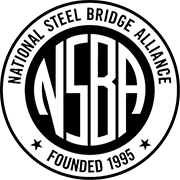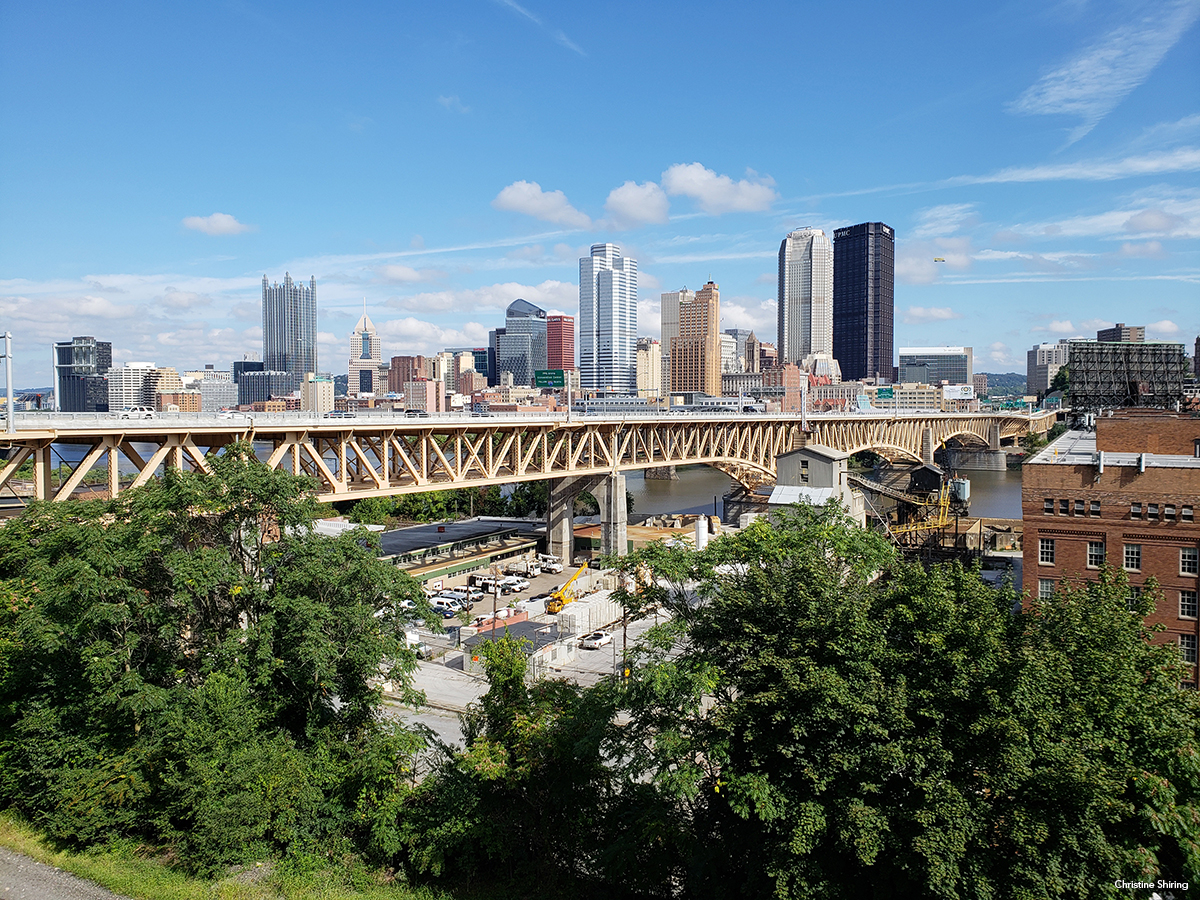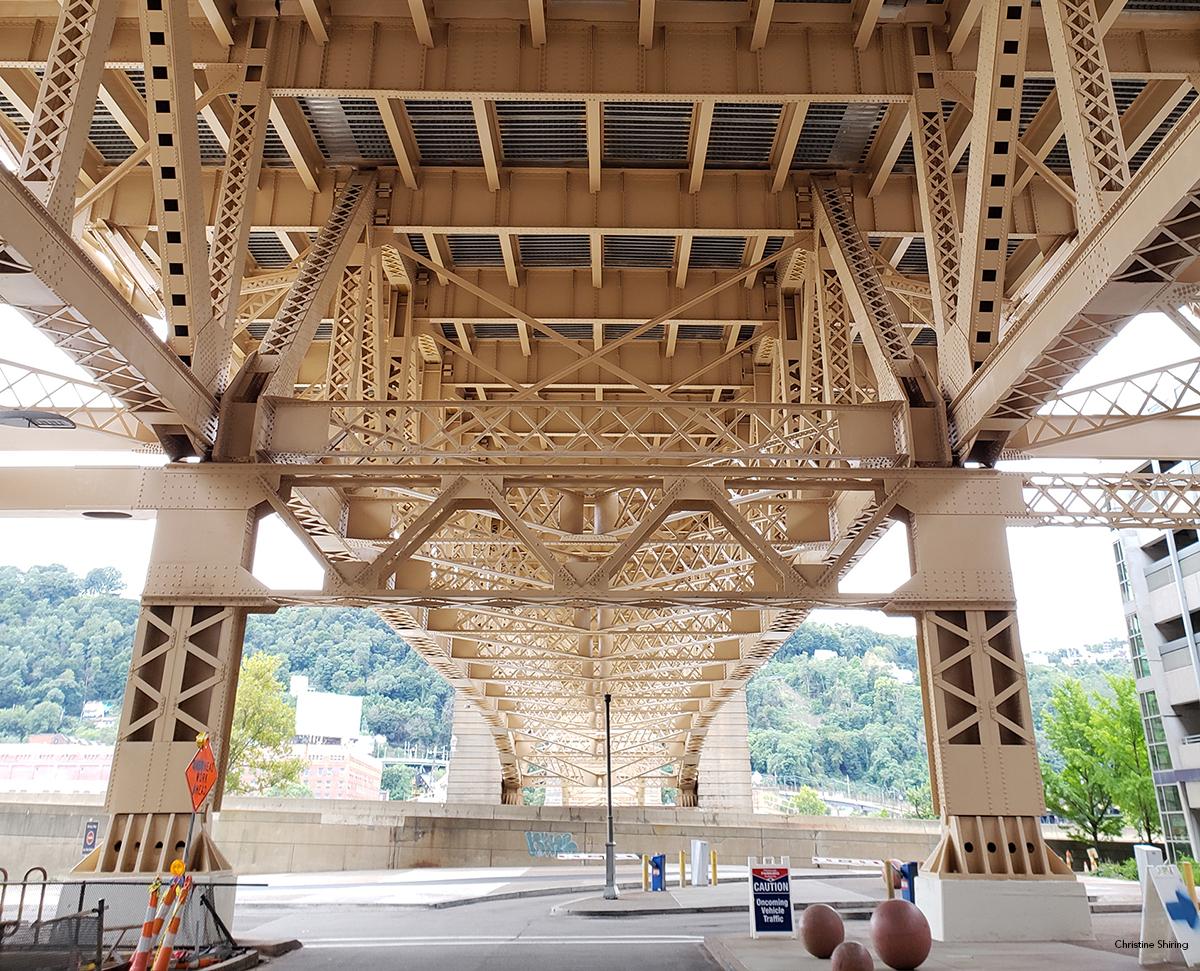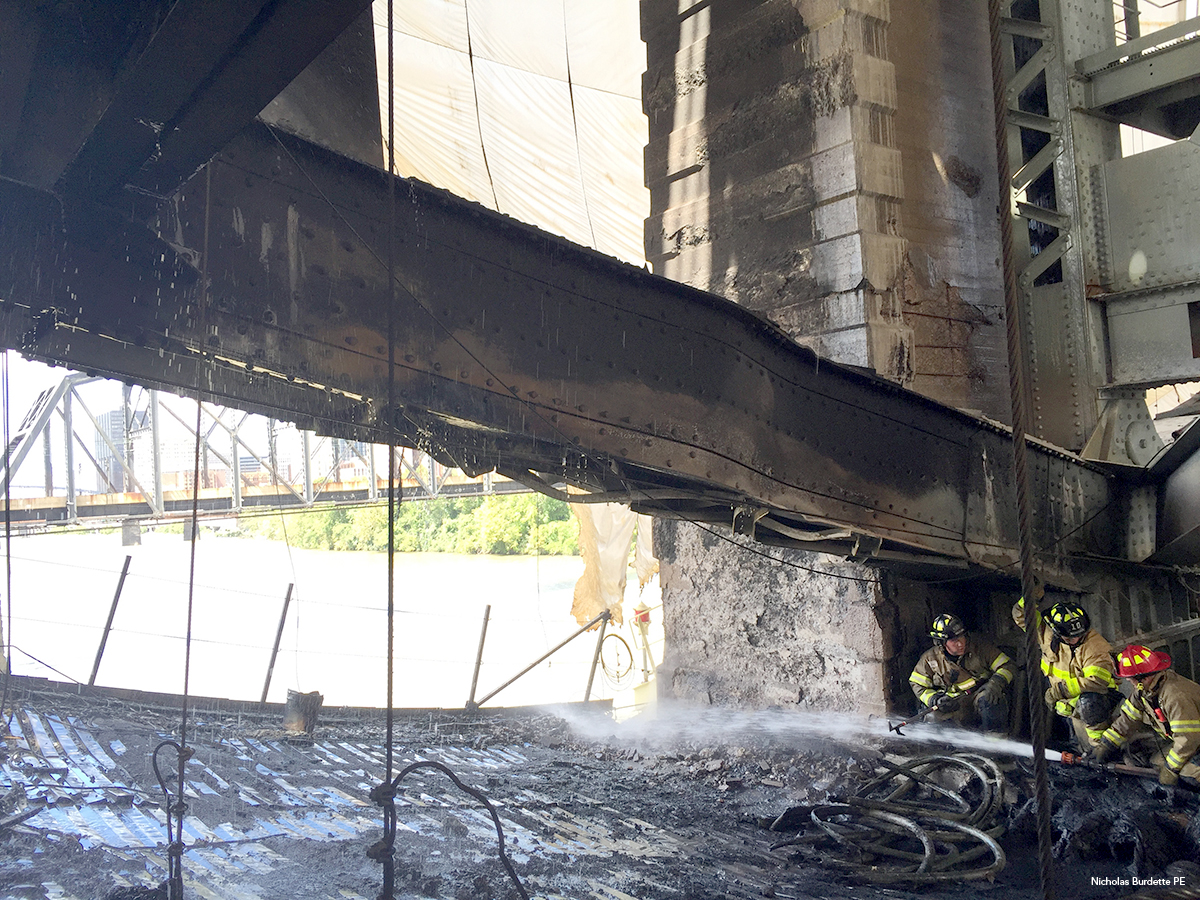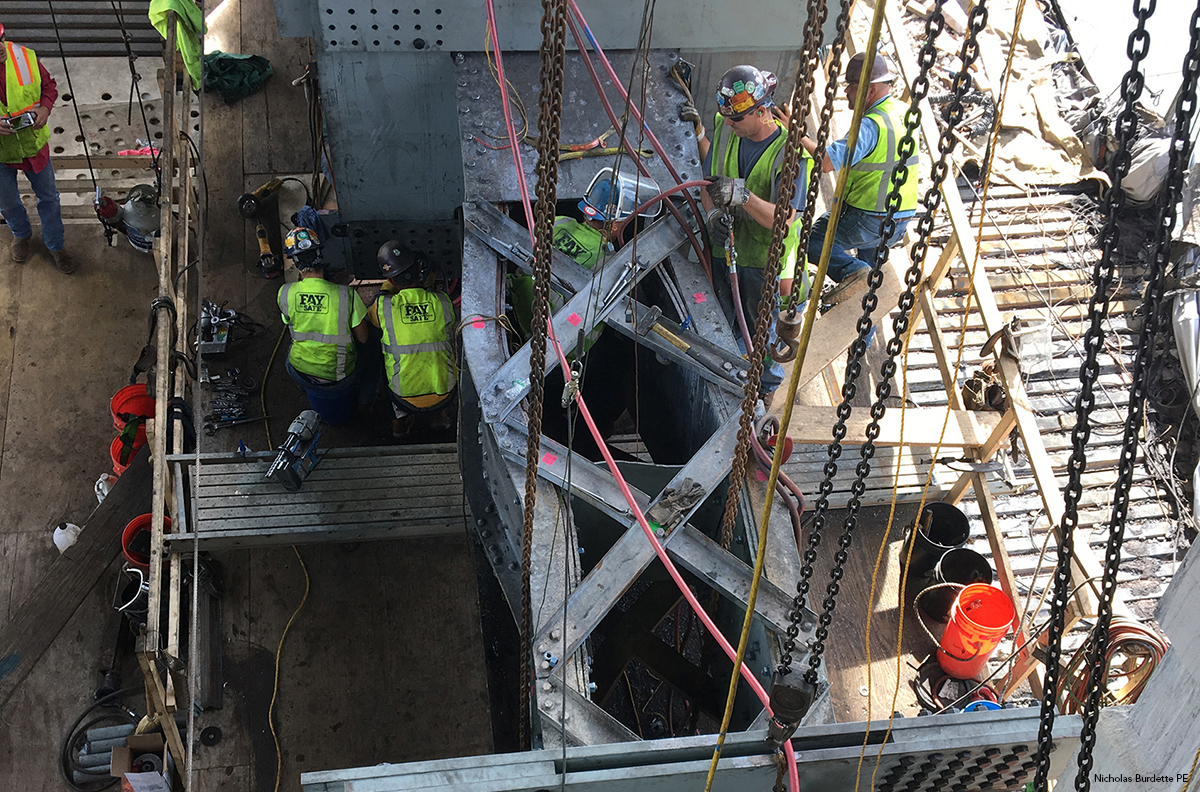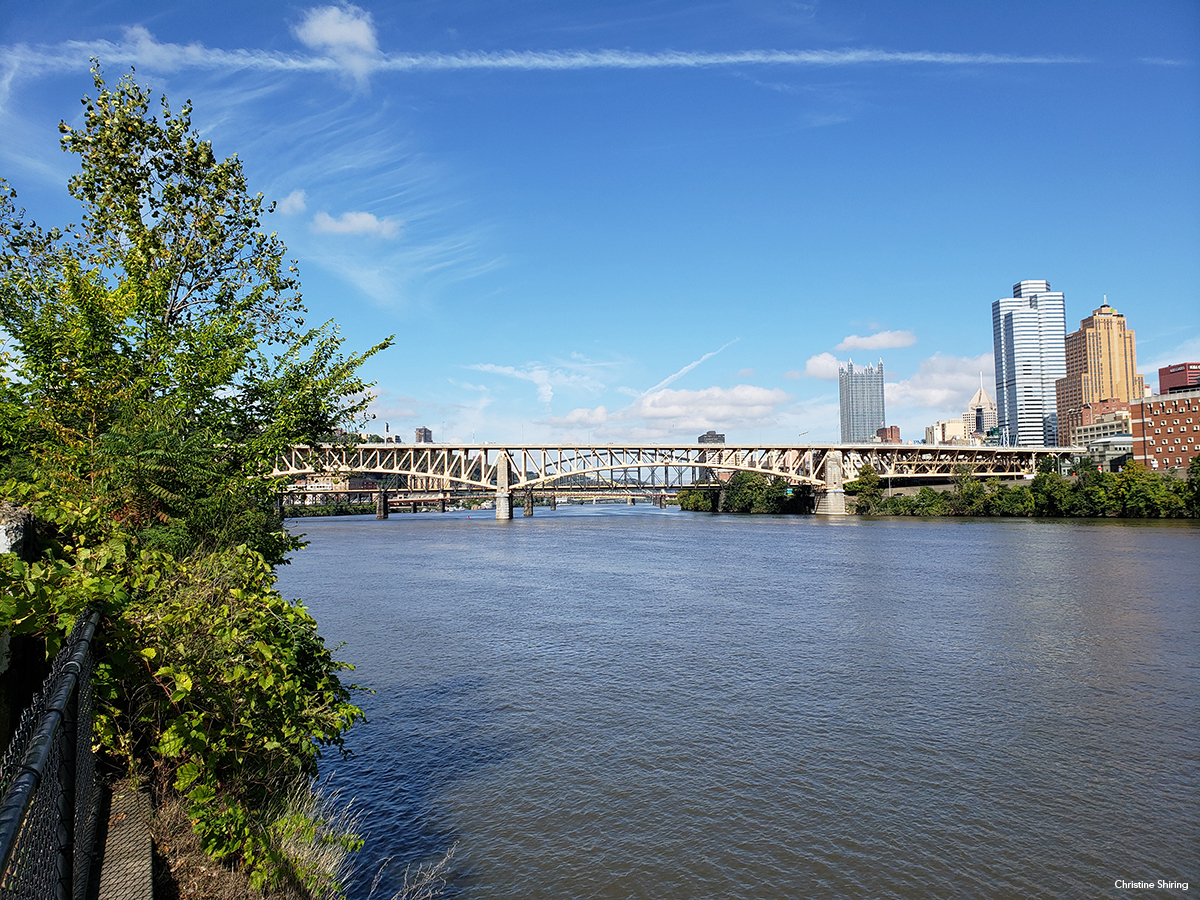National Steel Bridge Alliance
Liberty Bridge
Special Award -- Resilience
The Liberty Bridge has been a landmark structure and Pittsburgh icon since it opened in 1928. A recent construction mishap made it an icon for the resilience of steel, too.
In the years following its five-mile-long opening parade, this bridge created the modern suburbs and quadrupled property values south of Pittsburgh. However, by 2014 the bridge, which carried 55,000 vehicles per day, was in poor condition. It could no longer carry trucks and had become a poster-child for America’s infrastructure crisis, featuring prominently in a 60 Minutes profile of America’s neglected infrastructure. Referring to Liberty Bridge and others like it, Ray LaHood, United States Secretary of Transportation, said plainly: “Our infrastructure is on life support right now.”
PennDOT and HDR responded with a rehabilitation project that preserved the structure while meeting current engineering and accessibility standards. PennDOT’s main goals in this rehabilitation were to remove the load posting on the bridge, ensure the bridge was accessible and safe per current codes, and secure 40 more years of use from this historic truss.
The first steel Exodermic grid deck used in Pennsylvania reduced impacts to the bridge’s thousands of daily users while a deck the size of three football fields was replaced. Sections of this deck were prefabricated in panels that could be installed during weekend closures and connected together with high-strength concrete. A custom rapid-set concrete mix was created for this project, which allowed traffic to use new deck sections just a few hours after the concrete was placed. The new deck combines the strength of steel T-beams with reinforced concrete on top, making it strong, light, and easy to overlay in the future.
The deck innovations were planned in advance, but the greatest innovations are often unplanned. When an accidental construction fire warped and buckled a main truss compression chord, forcing an immediate bridge closure, the team raced to develop a solution to fix the bridge and reopen this critical urban link. The bridge was in a perilous state; no one knew how badly the structure might be overstressed or if collapse was imminent. To assess and fix the bridge, teams of engineers worked many days and nights until the bridge reopened.
The team used a 3D analysis model to assess the crippled structure, including both trusses, every bracing member, and the partially removed deck. Using hand-drafted documents from the 1920s, hundreds of unique truss and bracing members were modeled. The day following the closure, the new model showed that most of the 1,000 tons carried by the damaged chord shed into the undamaged sister truss through wind bracing. The 3D steel truss and bracing system proved redundant. No member was overstressed from the bridge dead load. This finding gave authorities confidence to open the river below the structure to commercial traffic, preventing further economic impact to river commerce.
Without a historical precedent to go by, engineers developed a steel jacking frame concept to fix the buckled member that same day. This frame would attach to the member and 2,000 tons of force could be applied with huge jacks to straighten the buckled steel. The contractor adopted the concept and their design team developed it further. The member was repaired through a combination of jacking and heat straightening only 24 days after the fire, and traffic was restored on the bridge—a momentous day for Pittsburgh commuters.
Trucks can now use the structure, with its new bridge deck and supporting stringers and after hundreds of unique steel repairs on beams, truss members, and connection plates. Replacing the bridge deck was crucial in order to preserve the bridge and allow it to function safely for another 40 years. The new deck, with modern bridge joints and drainage, provides a robust and waterproof “roof” to keep the steel below dry and corrosion-free. In addition, replacing the old stringers along with the deck eliminated many poor details that are prone to cracking over time. Holes, cuts, and welds in these beams did not meet current fatigue requirements. As years of exposure to traffic mounted, these details were a long-term liability requiring detailed documentation for each inspection. Replacing all stringers with new, properly fabricated beams, eliminated this liability.
Project Team
-
Fabricators:
-
L.B. Foster Company, Pittsburgh *AISC CERTIFIED*
-
Hall Industries, Inc., Ellwood City, Pa. *AISC MEMBER* *AISC CERTIFIED*
-
Engineer: HDR, Pittsburgh
-
General contractor: Fay, an i+iconUSA Company, Pittsburgh
-
Owner: PennDOT, Engineering District 11, Bridgeville, Pa.
Prize Bridge Information
- Year Awarded: 2020
- Year Completed: 2018
- Location: Pittsburgh, PA
- Award Class: Reconstructed
Structure Information
- Structure Type: Truss
- Coating System: Paint
- Span Length (ft): 41.5, 65.75, 45.5, 247.25, 278.75, 168.5, 152, 470.5, 152, 166.25, 152, 274.25, 242, 148.5, 43.25, 14.5
- Structure Length (ft): 2,663
- Average Deck Width (ft): 67
- Steel Weight/Deck Area (lb/ft²): 0.145 tons/square yard
- Amount of Steel (tons): 2,750
